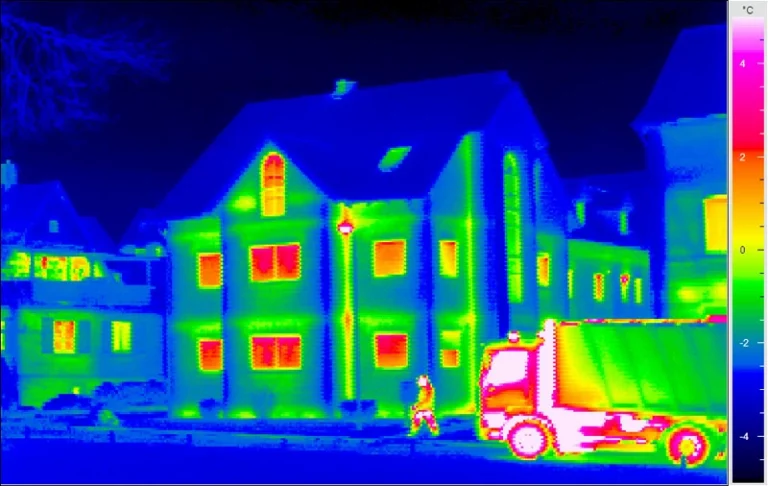In an era where technological innovation seems to advance at a breakneck pace, one cannot help but wonder why the humble infrared (IR) remote controller, a technology that has been around for decades, remains a prevalent choice for controlling our electronic devices.
While Bluetooth and Wi-Fi have stormed the scene with their impressive data transmission capabilities and multi-functional prowess, the old-school IR remote controller quietly stands its ground, proving that sometimes, simplicity trumps complexity.
In this article, we will explore the enduring charm of infrared remote controllers and unravel the secret behind their continued relevance – unmatched power efficiency.
The Rise of Infrared Technology
Before we delve into the wonders of power efficiency, it’s worth taking a moment to appreciate the roots of infrared technology. Infrared communication first made its mark in the early 1950s and quickly became the go-to choice for remote control applications.
Its mechanism is deceptively simple yet incredibly effective: it relies on the transmission of infrared light signals to convey commands from the remote controller to the receiving device.
This invisible light spectrum has one remarkable attribute that has kept it alive for all these years – minimal power consumption.
The Power Efficiency Paradox
In a world where power efficiency is the holy grail of modern technology, IR remote controllers have an ace up their sleeve.
Unlike their more sophisticated counterparts like Bluetooth and Wi-Fi, IR doesn’t demand a continuous live connection between the transmitter (remote controller) and the receiver (TV, air conditioner, or any other controlled device).
Instead, it operates on the principle of standby mode, where the receiving device only awakens when it detects an incoming IR signal.
This is where the power efficiency of infrared technology truly shines. While Bluetooth and Wi-Fi devices must constantly maintain a connection, expending energy even when no action is taking place, IR devices lie dormant, consuming negligible power.
This “listen-when-needed” approach allows remote controllers to operate for months, if not years, on a single set of batteries.
How Infrared (IR) Technology Works
Now that we’ve explored the enduring appeal of IR remote controllers, let’s peel back the layers and take a closer look at how this technology works its magic. At its core, IR technology relies on the principle of electromagnetic radiation, specifically in the infrared spectrum.
In simple terms, it harnesses the power of light that is invisible to the human eye.
When you press a button on your IR remote controller, it emits a series of rapid pulses of infrared light, each representing a specific command. These pulses are modulated to carry information, such as the command type and device target.
These pulses are then transmitted as bursts of light, typically at a frequency of around 38 kHz, to ensure efficient and reliable communication.

On the receiving end, your TV or other controlled device has an IR sensor, also known as a receiver module, which detects these bursts of light. The sensor is designed to “listen” for these pulses, and when it recognizes a valid command, it interprets the instructions and carries out the desired action.
This seamless process allows you to control your devices from a distance with precision and ease.
The beauty of IR technology lies in its simplicity and reliability. Unlike more complex wireless communication standards, IR requires minimal hardware and is less susceptible to interference.
Its ability to transmit commands with high accuracy, coupled with its power efficiency, makes it a timeless choice for remote control applications in our increasingly digital world.
The Beauty of Burstiness
Another intriguing aspect of IR technology is its bursty nature. When you press a button on your IR remote controller, it sends a series of rapid, discrete pulses of infrared light to convey the command.
This bursty transmission ensures that the command is clear, concise, and unlikely to be misinterpreted. Moreover, it reduces the risk of interference with other IR devices, making IR remote controllers remarkably reliable even in crowded environments.
The Competition: Bluetooth and Wi-Fi
Now, let’s take a moment to appreciate the technological marvels that are Bluetooth and Wi-Fi. These wireless communication standards have revolutionized the way we connect and control our devices.
They can transmit large volumes of data, support bi-directional communication, and enable smart home automation like never before. However, they come at a cost – the constant need to maintain a live connection drains power and requires more complex hardware and software.
IR’s Power Efficiency in the Modern World
In the era of smart homes and the Internet of Things (IoT), where every device seems to be connected, one might wonder why IR remote controllers persist. The answer lies in their elegance and efficiency.
In many cases, such as turning on a TV or adjusting the volume of an audio system, complex data transmission is unnecessary. For these straightforward tasks, the simplicity and power efficiency of IR are hard to beat.
The Evolution of Infrared Remote Controllers
As we dive deeper into the world of infrared remote controllers, it’s essential to acknowledge their evolution over the years. While the basic principles of infrared technology have remained largely unchanged, the devices themselves have undergone significant improvements.
Early IR remote controllers were often clunky and limited in functionality, primarily used for basic tasks like changing channels or adjusting volume. However, as technology advanced, so did IR remotes.
The introduction of universal remotes allowed users to control multiple devices with a single controller, reducing clutter and enhancing convenience.
Moreover, the integration of infrared technology into smartphones has transformed the way we interact with our surroundings. Many modern smartphones come equipped with IR blasters, turning your phone into a versatile remote control for various devices.
This convergence of technology demonstrates the enduring relevance and adaptability of IR in a rapidly evolving tech landscape.
The Sustainability Angle
In an age where sustainability is at the forefront of our concerns, IR remote controllers also have an eco-friendly edge. Their minimal power consumption means fewer batteries in landfills, contributing to a greener future.
When compared to the constant battery replacements required by other wireless technologies, IR’s efficiency shines as a responsible choice for environmentally-conscious consumers.
IR in Niche Applications
In addition to everyday household use, IR technology finds its place in numerous specialized applications. For instance, it plays a crucial role in medical equipment, where precise control is essential.
Infrared remote controllers are used in MRI machines, enabling medical professionals to fine-tune settings without disturbing the patient’s comfort.
Furthermore, IR’s reliability and simplicity make it an ideal choice for industrial settings. Automated manufacturing processes often rely on IR remote controllers to execute precise actions, ensuring efficient production without unnecessary complications.
The Future of IR Remote Controllers
While IR technology has undoubtedly stood the test of time, it’s essential to acknowledge that it may not be the go-to choice for every situation. In an increasingly interconnected world, where devices communicate seamlessly with one another, the role of IR may become more specialized.
However, this doesn’t diminish its importance.
Manufacturers continue to refine and innovate IR remote controllers, incorporating modern design elements and features that bridge the gap between simplicity and functionality.
These devices will likely remain the preferred choice for those who appreciate the elegance of a power-efficient and reliable solution.
Conclusion
Infrared remote controllers may be considered a technology of the past, but their resilience and enduring relevance in today’s world cannot be understated. Their power efficiency, bursty transmission, and simplicity continue to make them an essential part of our daily lives.
As we journey further into the digital age, it’s comforting to know that the unassuming IR remote controller still has a place in our increasingly connected and complex world.
So, the next time you use your IR remote to dim the lights, adjust the thermostat, or power up your home entertainment system, take a moment to appreciate the technological marvel that has stood the test of time.
In the world of ever-advancing technology, the old adage rings true: “If it ain’t broke, don’t fix it.” And when it comes to IR remote controllers, it’s clear that this classic technology still has plenty of life left in it.
So, the next time you pick up your trusty old IR remote controller to change the channel or adjust the temperature, remember that beneath its unassuming exterior lies a power-efficient marvel that continues to shine in the ever-evolving world of technology.
In a world of complexity, sometimes, simplicity and efficiency are all we need.





